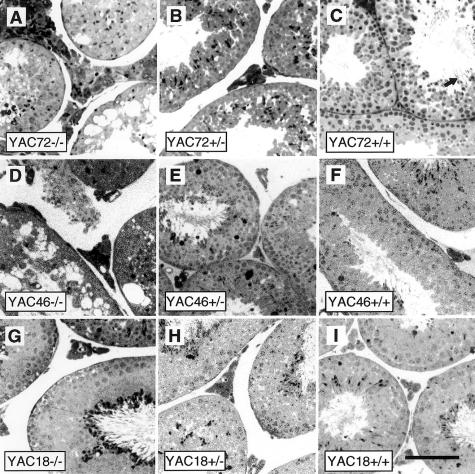Figure 2.
Testicular morphology of YAC transgene–rescued Hdh-nullizygous mice. Semithin sections of testes stained with toluidine blue that are from 8-mo-old mice reveal the gross testicular morphology of mice with the YAC72 (A–C), YAC46 (D–F), and YAC18 (G–I) HD transgenes and either complete absence of endogenous htt (−/−), 50% of endogenous htt levels (+/−), or 100% of endogenous htt levels (+/+). Massive degeneration of spermatogenic cells occurs in the seminiferous tubules of mice expressing mutant htt with either 46 or 72 polyglutamine repeats (A and D). The cell death is most pronounced in YAC72 −/− (A), intermediate in YAC46 −/− (D), and not present in YAC18 −/− (G) Hdh-nullizygous mice. The human HD transgene in each of these lines of mice is identical except for the length of the CAG repeat, and these results suggest that this novel cell-death phenotype is CAG-repeat-length dependent. Increasing levels of endogenous htt markedly reduced the amount of spermatogenic-cell degeneration (B, C, E, and F) observed in YAC46 and YAC72 mice. (Scale bar = 100 μm)

